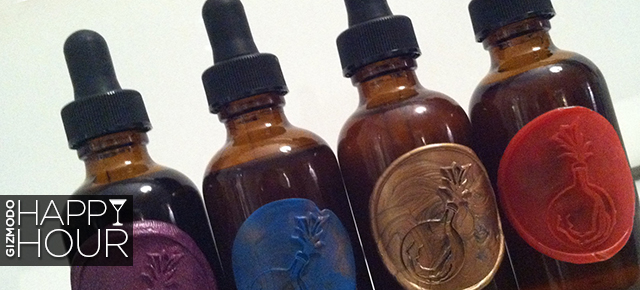By day, Rachel Meyer is a plant evolutionary biologist researching crop genomics at NYU. But, by evening and weekend, she is on a mission to get more botany into your cocktail — and she’s shared an exclusive new drink recipe with Gizmodo to show how.
“When you tell most people you’re botanist,” Meyer lamented, “they ask you for plant care tips or assume you grow weed.”
FYI: apparently, botanists kill house plants and rely on dealers just like the rest of us. Their particular superpowers lie more in the area of collecting and cataloging plant varieties, as well as in recording the history of human-plant interaction: crop domestication, foraging patterns, and traditional uses.
All of which, Meyer realised, combined with standard lab skills, makes a botanist the perfect person to invent brand new cocktail bitters. Or, indeed, half a dozen. And so, a couple of years ago, Meyer partnered with two friends and fellow botanists, Selena Ahmed and Ashley Duval, to develop their own bitters company: Shoots and Roots Bitters.
Seasoning Your Cocktail
Bitters , for those of you who haven’t been keeping an eye on the cocktail scene, are aromatic, powerful, and, yes, bitter-tasting botanical extracts.
A drop or two adds much-needed nuance and depth to your spirit and mixer: bartenders often say that bitters are to cocktails as seasoning is to food.

Traditionally, bitters were prized for their medicinal properties, advertised as cure-alls for grown-ups and children alike, which allowed them to slide under the wire during Prohibition. Today, old-school bitters, like the Angostura that completes your Manhattan or the Peychaud’s without which your Sazerac is just any old whiskey cocktail, are being joined by a new generation of craft bitters — stripped of health claims thanks to the FDA, but promising a whole new world of organic, artisanal, seasonal flavours.
Shoots and Roots, however, are doing something altogether different. Their mission is to leverage bitters as a teaching tool: a way to represent the plants of a particular place, and to tell a story about the traditional culture and plant knowledge of that place. To that end, while most bitters companies are highly secretive about their ingredients (supposedly, only five people in the world know the recipe for Angostura), Shoots and Roots are open source.
Stealth Botany
“We actually want people to know the ingredients, and even learn about their traditional habitat and uses, as well as their potential health benefits,” Meyer explained. A QR code on the back of each bottle leads to detailed ethnobotanical information on each ingredient in the blend, as part of Shoots and Roots’ stealth plot to slip a lesson about a handful of the planet’s 7,000-plus edible plants into your new favourite tipple.
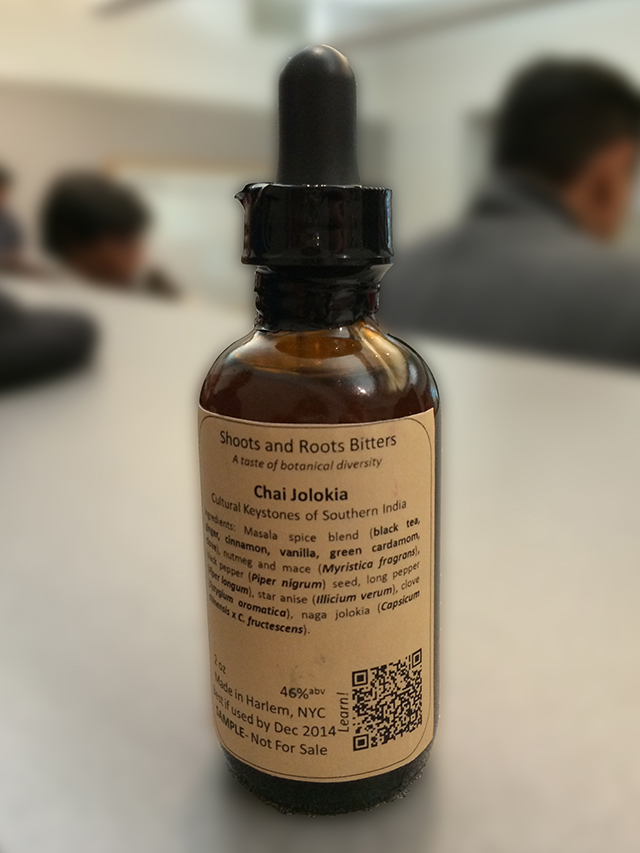
Take, for example, their Chai Jolokia bitters, which, despite Meyer’s warning that it might be an acquired taste (“it’s super spicy,” she explained), I found completely delicious. Warming and gingery, even when just mixed with seltzer for tasting purposes, this tribute to the flavours of southern India felt like the perfect drink for the last lingering traces of an East Coast winter. Meyer recommends mixing it with gin, iced Darjeeling tea, and honey to make a Spice Route Chai-tini that sounds utterly fabulous.
But you don’t simply sit back and enjoy the drink with Shoots and Roots: instead, I found myself learning about the difference between nutmeg and mace, the fact that a compound in star anise is the primary chemical precursor of Tamiflu, and that, although black pepper is native to India, Vietnam is its largest producer and exporter.
As part of Meyer’s presentation at the Experimental Cuisine Collective, I went on to try the Filipino-inspired Mt. Apo, the fragrant Omani Sitting Room, which won’t be commercially available because splitting date seeds with a hammer took way too long, and the Shangrila, whose Himalayan flavours include rare Tartary Buckwheat, imported from one of Meyer’s field trips (under permit from the USDA; don’t try this without one) and now growing in the Manhattan greenhouse of NYU’s Center for Genomics and Systems Biology.
Clitoria flowers and bear medicine
In another diversion into botany, we paused to appreciate the blue clitoria flower, a key ingredient in Shoots and Roots’ new Mexican-origin Demon Flower bitters, and learned that the technical name for flowers that grow out of the trunk of a tree, like cacao, rather than the tip of a stem, is cauliflory. (Cauliflower, disappointingly, is not a good example of cauliflory.)
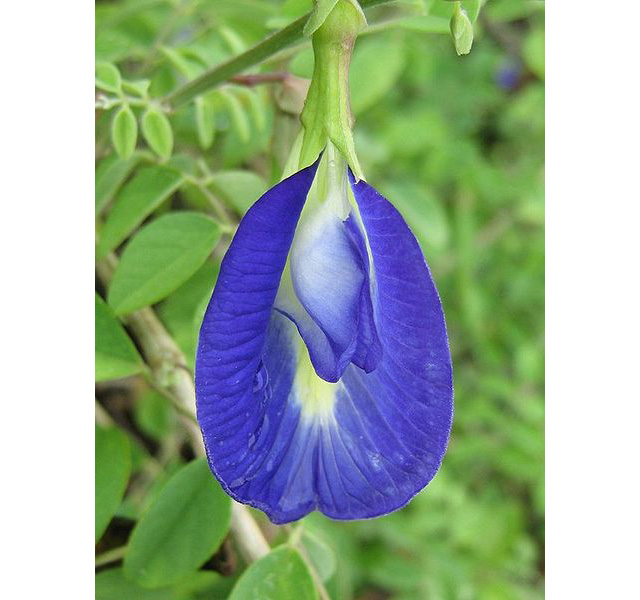
Meyer explained that the Shoots and Roots team are experimenting with U.S.-based flavours for their next bitters, including a Harlem-based bottle in honour of their new home in the Hot Bread Kitchen incubator.
“It’s really bitter; you won’t like it,” she said, while offering a taste of their still-under-development Black Bear Bitters, a Western-inspired blend based on bear foraging habits. (It was actually my favourite, with a refreshing celery note.) Apparently, some aspects of traditional Native American medicine are simply based on observing bear self-medication: one of the key ingredients in the new bitters is osha root, a carroty-looking herb native to the Rockies that bears rub on their stomachs when they feel sick.
All this from a drop of bitters: at this rate, I figure maybe I really could get a PhD just from hanging out at the bar.
Shoots and Roots got started in 2012, hosting educational tastings at New York City-area botanical gardens, bars, and even the American Museum of Natural History. In January, however, they successfully completed a Kickstarter campaign to release their first line of bottled bitters. In late April, after they have finished shipping those rewards, they will start selling bitters to local bars and through their online shop. Get your pre-orders in via email and Facebook now!
Making Botanical Extractions: At Step-by-Step Guide
If you happen to have access to some lab equipment, and can figure out how to use PubMed to check for potential toxicity, here’s a step-by-step photo guide to how Shoots and Roots do it:
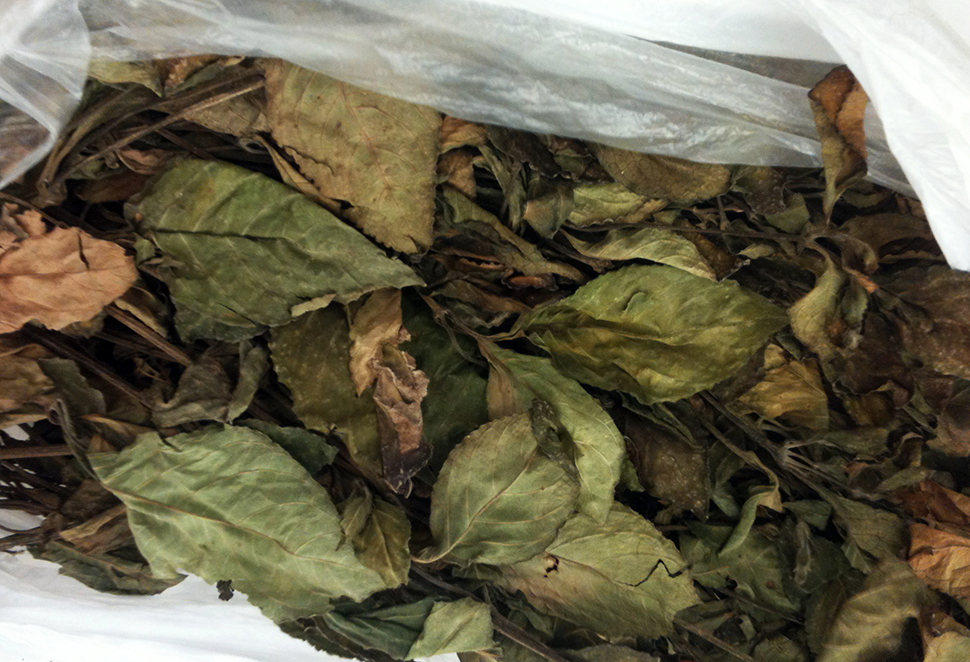
Gather your fresh or dried ingredients. (Shoots and Roots take care to only use sustainable sources. In addition to their own collecting on field trips, they source from Mountain Rose Herbs and Flower Power, among others.)
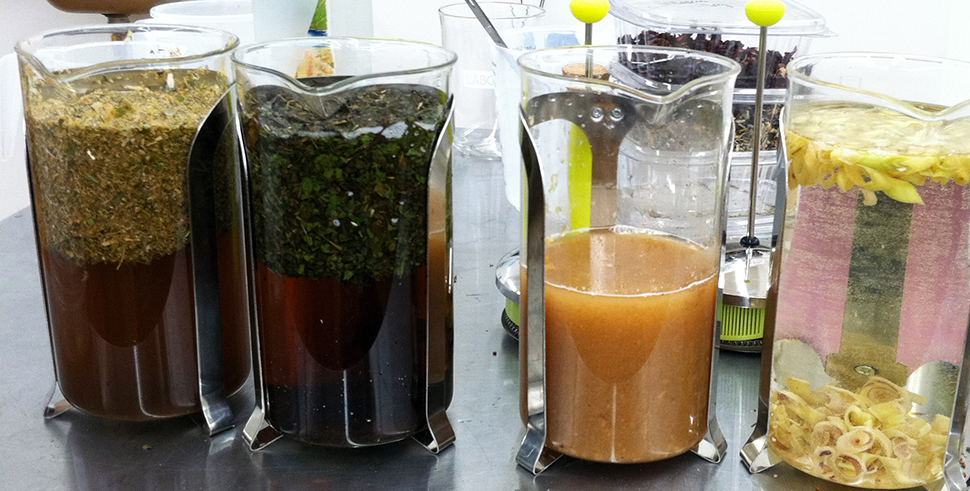
Pulverize or chop, mix with 80% ethanol, and then sonicate (shown below) the resulting blends for 30 minutes at 30 degrees Celsius.
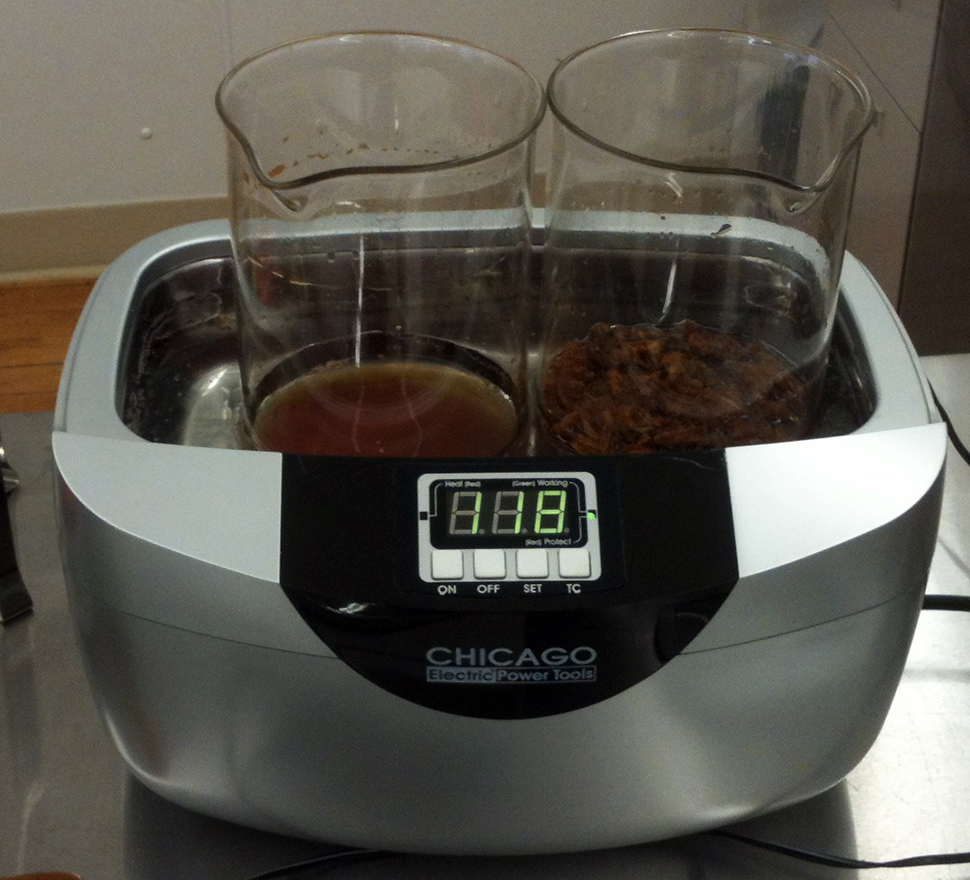
Continue to incubate for up to two weeks. Then strain, and dilute to ~40% with a tea made from boiled solid leftovers or a tea made with other herbs (that you don’t want an alcohol extract of), or alternatively, use a rotary evaporator (shown below) to pull off the ethanol until the concentrated extract is ~40% abv. Sweeten as needed, and then make yourself a tasty cocktail — you’ve earned it!
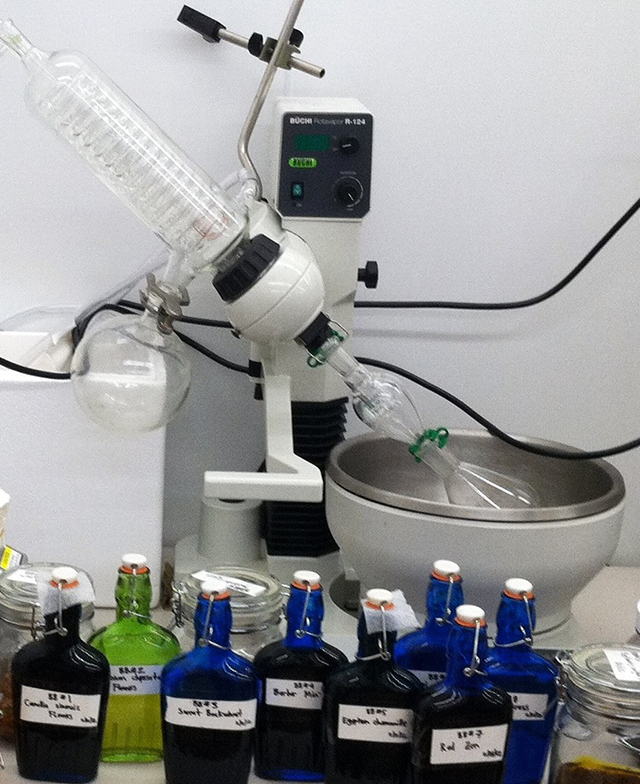
Your Exclusive Cocktail Recipe: The Cha Cha Cha by Joji Watanabe
To whet your appetite, Meyer provided an exclusive cocktail recipe just for Gizmodo readers. It uses Shoots and Roots’ Ki Bitters, which combines six native Japanese fruits and herbs to create a drink with a gorgeous rosy tinge and a smoky, tart flavour. You can find out all about the ingredients, which include dogwood and jujube, here; shochu is a traditional Japanese grain liquor.
The cocktail was invented by genius bartender Joji Watanabe of NYC’s Experimental Cocktail Club. Cheers!
